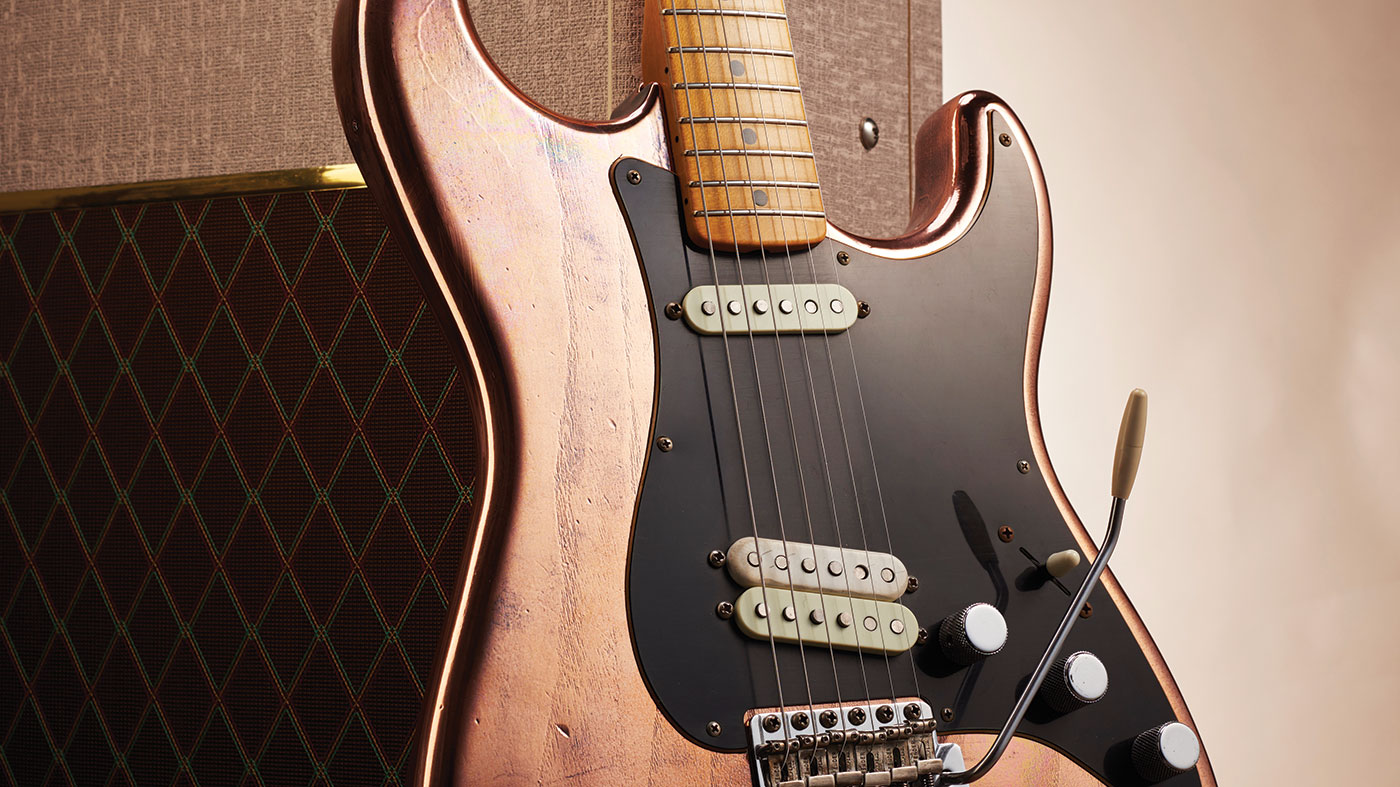Fender Custom Shop's Todd Krause: how I built the Last Waltz Stratocaster
The Master Builder on one of his most challenging projects

Recreating very famous guitars to the finest detail is all part of a day’s work for Fender Custom Shop Master Builder Todd Krause. But just how difficult was the Last Waltz Stratocaster to pull off?
It’s fair to say this project kicked off well over a decade ago. “I’d say somewhere around 2002 to ’03,” suggests Todd. “I’d done some updated versions of Robbie’s ‘Moonburst’ Strat, two or three of them, then he went through his collection and sent me a lot of guitars for repairs and reworking. That led to the copper Strat, which I guess was in a museum [Hard Rock Cafe] for some years; he sent that to me to piece back together.”
How did it go from being a repair to becoming a limited-edition model?
I thought I’d do the patina by hand, which was a huge mistake. I actually destroyed three or four of them!
“Good question. At some point, I think he’d talked to Eric [Clapton]; I’d done the recreation of Blackie. At one stage, I had [Robbie’s guitar] here and showed it to a couple of the managers and said it would be a cool guitar to replicate. It wasn’t, ‘Let’s do this’ and it just happened, it took a while.”
Fender states the guitar is “dipped in bronze”. Is this the same process used to preserve, for example, your kids’ first pairs of shoes?

“Yeah, correct. [But] it’s not [dipped in] a big vat of molten bronze! Actually, the electro-plating was done by The Bronzery in Escondido [California]. He nailed it first time. We did a sample body some years ago, just for a test. When they first come out, even with the black on them [once plated, the metal is sprayed black then most of that is removed to create the antique effect], they’re still quite shiny. It takes some time to get that natural patina - a year or two before they start looking exactly right.
“I tried a couple of experiments. I thought I’d do the patina by hand, which was a huge mistake. I actually destroyed three or four of them! The process that I used wouldn’t stop - one of them turned green like the Statue Of Liberty. So I just decided to let the plater do his thing. Ultimately, he was right.”
But it’s not just abut the bronzing - that pickup mod is central to the guitar…
Wiring those two pickups together means it has a lot of output, like a humbucker, but it has a lot of clarity, too
“I don’t know who actually came up with the mod, but the thing that surprised me about wiring those two pickups together the way they are, then putting them in a guitar that is enclosed in metal, is that you’d expect it to sound a certain way. But while it has a lot of output, like a humbucker, it has a lot of clarity, too, like a single coil. So you play big open chords and it’s not muddy or mushy at all. The first time I plugged it in, it was like, ‘Wow!’”
How long does the process of cloning a guitar like this take?

Robbie Robertson on The Last Waltz, gear secrets and that bronze Fender Strat
“I was about three months into it before I started the process of building the guitars. That pickguard is very unique. I was able to find some old TRW capacitors that were of the same spec, not identical, but as close as I could get. We matched the tension on the pots, the type of pot, the output. It takes time to source these things.
Get the MusicRadar Newsletter
Want all the hottest music and gear news, reviews, deals, features and more, direct to your inbox? Sign up here.
“Then the headstock has its own shape - that over-sanded ’54 shape. I don’t think the templates were perfected at that point; they would wear out and they would sand how they saw fit. That head-plug is a mystery: why was it airbrushed that way? But once all the pieces are in place, the build goes pretty smoothly after that.”
You’ve made numerous recreations of very famous guitars. On a scale of one to 10, how difficult was this Last Waltz Strat to recreate?
“I’d give it a 10! I spent over a year just trying to find someone who could bronze the body. You’d think that would be easy with the internet, but anything I would type into the search, I’d just get tanning salons!”
Dave Burrluck is one of the world’s most experienced guitar journalists, who started writing back in the '80s for International Musician and Recording World, co-founded The Guitar Magazine and has been the Gear Reviews Editor of Guitarist magazine for the past two decades. Along the way, Dave has been the sole author of The PRS Guitar Book and The Player's Guide to Guitar Maintenance as well as contributing to numerous other books on the electric guitar. Dave is an active gigging and recording musician and still finds time to make, repair and mod guitars, not least for Guitarist’s The Mod Squad.
“These guitars travel around the world and they need to be road ready”: Jackson gives Misha Mansoor’s Juggernaut a new lick of paint, an ebony fingerboard and upgrades to stainless steel frets in signature model refresh
“It’s about delivering the most in-demand mods straight from the factory”: Fender hot-rods itself as the Player II Modified Series rolls out the upgrades – and it got IDLES to demo them












